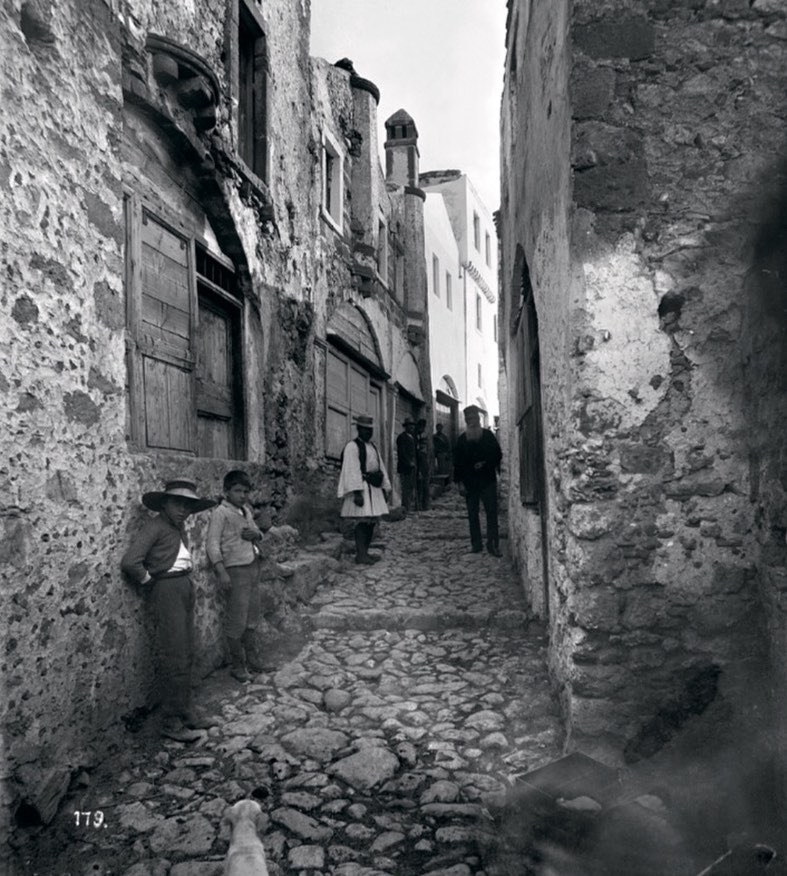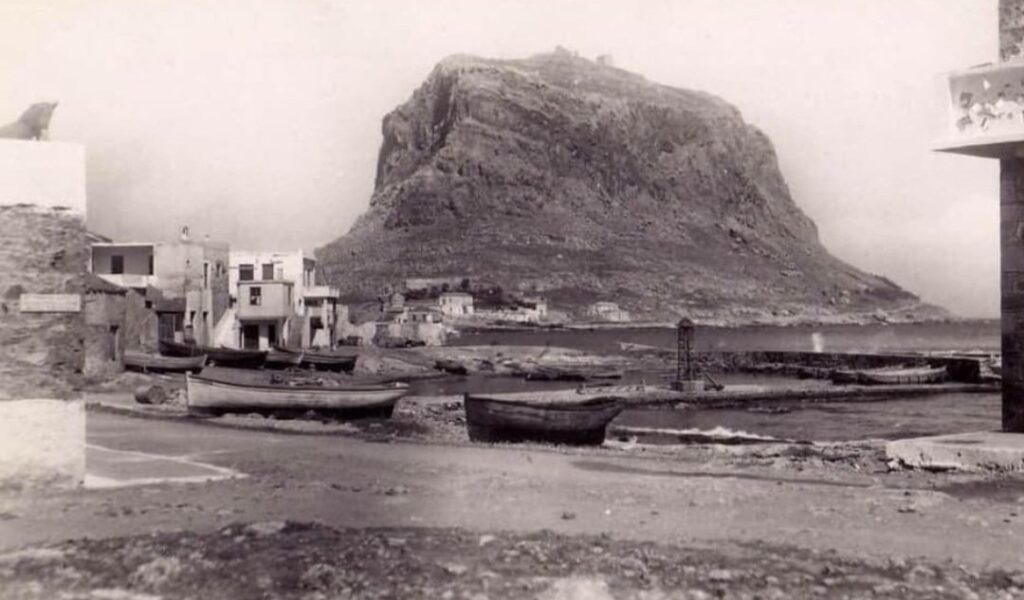A Natural Fortress:
The Geographical Significance of Monemvasia

A Treasure of Greece
Monemvasia, a breathtaking town in southern Greece, is widely considered one of the most well-preserved medieval towns in the country. Its unique combination of history, architecture, and natural beauty has made it an essential part of Greece’s cultural heritage. The town, stands as a living testament to the Byzantine, Venetian, and Ottoman periods.
Beyond its rich past, Monemvasia is deeply connected to the moon rise a celestial event that unites the town every month.
As the full moon rises over the Myrtonian Sea, the town’s residents, Monemvasiotes and visitors alike, pause in reverence to witness the transformation of the red moon into a pure white light, casting its silvery glow over the waves and the ancient stone walls. This moment, which has been celebrated for centuries, reflects the town’s unique relationship with the cosmos, where history and the eternal beauty of the moon converge.
The Most Preserved Historic Town in Greece
Monemvasia, a breathtaking town in southern Greece, is widely considered one of the most well-preserved medieval towns in the country. Its unique combination of history, architecture, and natural beauty has made it an essential part of Greece’s cultural heritage. The town, incorrectly referred to as the “Gibraltar of the East” due to its dramatic location, stands as a living testament to the Byzantine, Venetian, and Ottoman periods. Here’s a deep dive into why Monemvasia holds such historical significance and is regarded as the most preserved historic town in Greece.
Monemvasia’s preservation isn’t just in its stone walls and ancient streets, but in its connection to the sky above, a timeless symbol of both the past and the future.
Monemvasia’s history dates back to the 6th century when it was founded by the Byzantine Emperor Justinian I in the aftermath of the destruction of nearby cities by earthquakes and invasions. The town grew in importance over the centuries, benefiting from its strategic location as a trading and military hub.
During the Byzantine period, Monemvasia was a center of commerce and culture. Its well-planned layout, with narrow cobbled streets, steep alleys, and impressive stone buildings, still reflects the grandeur of this era. The town’s most significant Byzantine structure is the Church of Agia Sofia, a small but striking church that still stands today and serves as one of the town’s main architectural attractions.



Venetian Influence: Architectural Mastery
Monemvasia was captured by the Venetians in the 13th century and remained under their rule for several centuries. The Venetians contributed significantly to the town’s architecture, adding defensive walls, impressive gates, and large mansions that still dominate the townscape. The Venetians also fortified the town against both Ottoman and pirate attacks.
The Venetian period is best represented by the Castle of Monemvasia, a complex of fortifications that include both Byzantine and Venetian structures. The Castle was built atop the cliffs, offering panoramic views of the surrounding landscape and serving as a vital military stronghold. Its preservation, along with the Venetian-style buildings within the town, has earned Monemvasia a place as one of the most important historical sites in Greece.
For anyone seeking a deeper connection to Greece’s past, Monemvasia stands as an unparalleled destination that not only captures the spirit of ancient and medieval Greece but also keeps it alive for future generations.
Where Time Holds Its Breath Beneath the Moon
Monemvasia, where time stands still, holding its breath beneath the moon. Each month, we gather as a town, both Monemvasiotes and visitors alike, to witness an ancient spectacle: the red moon rising from the deep black of the Myrtonian Sea. As it ascends, it transforms before our eyes, shifting from fiery red to pure white. In its presence, we stand still, silent, united in wonder, as its silvery light bathes the waves and the ancient stone walls. We, a town of eternal memories, pause in awe, where history and the cosmos converge in one breathtaking moment, as it has for centuries, here on our big rock by the sea.
The Residents and Owners of Monemvasia
Residents and Owners Association of Monemvasia
Residents and Owners Association of Monemvasia
ROAM
Join 900+ subscribers
Stay in the loop with everything you need to know.